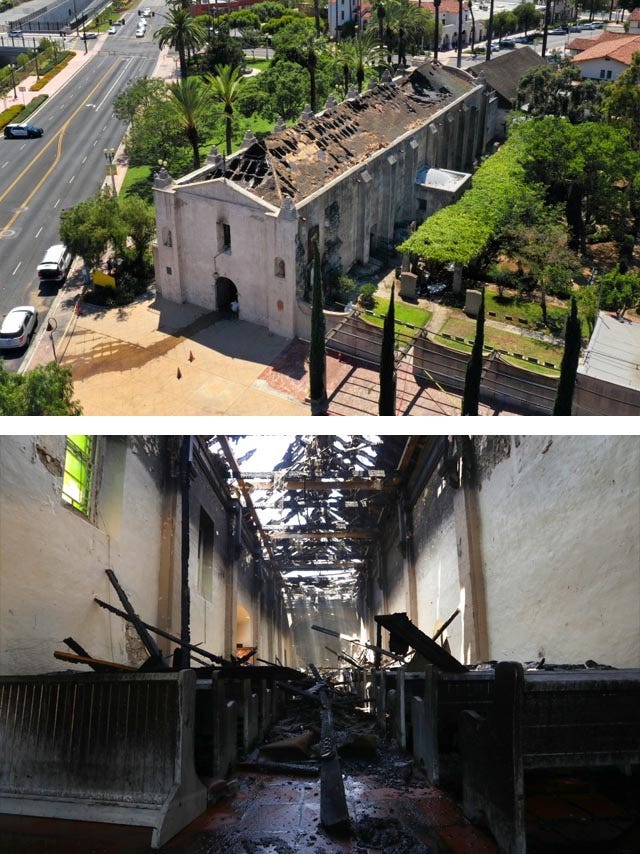Ep. 037: Mission San Gabriel, Godmother of L.A.
How California's fourth mission led to the founding of America's second-largest city
UPDATE July 12, 2020: Sad news from the Mission.
Both photos Carolyn Cole / Los Angeles Times
I was born and raised in the San Gabriel Valley, in the shadow, as it were, of Mission San Gabriel Arcangel, just under three miles away. The fourth California mission to be established, it has a few unique features--and one achievement to its lasting glory (or shame) which has garnered it the title "Godmother of the Pueblo of Los Angeles." Learn all about it in this episode of
TEMPLE TALES!





